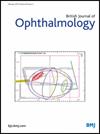人工晶状体矫正白内障术后老花眼的有效性:系统综述
IF 3.5
2区 医学
Q1 OPHTHALMOLOGY
引用次数: 0
摘要
本文综述了不同老花眼人工晶状体矫正(IOL)的视力结果、眼镜独立性(SI)、不良视力影响和成本效益的系统评价。如果比较了多焦点(双焦点和三焦点)、扩展焦深(EDOF)、调节型和单焦点iol,则纳入综述。使用AMSTAR-2工具。主要结果为未矫正的距离视力(UDVA)、中间视力(UIVA)和近视力(UNVA)。次要结果是SI、光晕和眩光以及成本效益。普洛斯彼罗注册CRD42023425283。纳入了8项系统评价。没有人在所有AMSTAR-2工具16项中得分为“是”。主要结果如下:所有iol报告相似的UDVA。EDOF和三焦iol报告了更好的UCIVA。三焦衍射、EDOF、调节和双焦的UNVA优于单焦IOL,其中三焦和生物焦的UNVA较好。次要结果:与单焦点iol相比,三焦点、双焦点和EDOF的SI更好。三焦眼镜和双焦眼镜报告更多的眩光和光晕。没有审查报告成本效益。研究结果表明,虽然多焦点和EDOF iol在UDVA和uva中表现相当,但多焦点iol在UNVA中表现更好,但代价是眩光和光晕。edof可以提供优越的眼镜独立性,但在近视力中可能不一致地匹配多焦点。本文章由计算机程序翻译,如有差异,请以英文原文为准。
Effectiveness of intraocular lenses designed to correct presbyopia after cataract surgery: an overview of systematic reviews
This is an overview of systematic reviews to evaluate the visual outcomes of different presbyopia correcting intraocular lens (IOL), spectacle independence (SI), adverse visual effects and cost-effectiveness. Reviews were included if they compared presbyopia-correcting IOLs—such as multifocal (bifocal and trifocal), extended-depth-of-focus (EDOF), and accommodative and monofocal IOLs. The AMSTAR-2 tool was used. Primary outcomes were uncorrected distance visual acuity (UDVA), intermediate visual acuity (UIVA) and near visual acuity (UNVA). Secondary outcomes were SI, halos and glare, and cost-effectiveness. Prospero registration CRD42023425283. Eight systematic reviews were included. None scored ‘Yes’ in all AMSTAR-2 tool 16 items. Primary outcomes were as follows: all IOLs reported similar UDVA. EDOF and trifocal IOLs reported better UCIVA. Trifocal diffractive, EDOF, accommodative and bifocals were better than monofocal IOL for UNVA and of these trifocal and biofocal reported better UNVA. Secondary outcomes: SI was better with trifocal, bifocals and EDOF compared with monofocal IOLs. Trifocals and bifocals reported more glare and halos. No review reported cost-effectiveness. The findings indicate that while multifocal and EDOF IOLs show comparable performance in UDVA and UIVA, multifocal performs better in UNVA but at the cost of glare and halos. EDOFs may offer superior spectacle independence but may not consistently match multifocal in near vision.
求助全文
通过发布文献求助,成功后即可免费获取论文全文。
去求助
来源期刊
CiteScore
10.30
自引率
2.40%
发文量
213
审稿时长
3-6 weeks
期刊介绍:
The British Journal of Ophthalmology (BJO) is an international peer-reviewed journal for ophthalmologists and visual science specialists. BJO publishes clinical investigations, clinical observations, and clinically relevant laboratory investigations related to ophthalmology. It also provides major reviews and also publishes manuscripts covering regional issues in a global context.

 求助内容:
求助内容: 应助结果提醒方式:
应助结果提醒方式:


